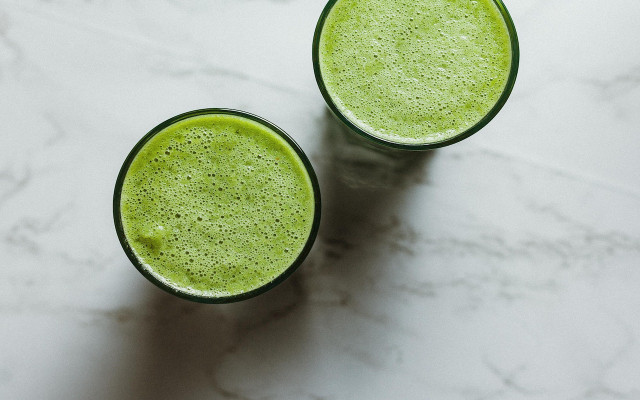If you’ve recently visited any trendy cafe or juice bar, chances are you’ve seen green juice on the menu. It’s become one of the biggest health trends of the past decade, and people boast about its health benefits. So we thought we’d take a look at the benefits of green juice.
For those wondering what green juice is, there’s a simple explanation. Green juice is a beverage made using the juices of green vegetables, which allows a ton of flexibility to tailor it to your tastes. Vegetables often include celery, kale, Swiss chard, cucumber, spinach, wheatgrass, romaine lettuce, and herbs like mint, parsley or basil. Some people also like to extend that to include green fruit like limes, pears, apples, and kiwis to help mask the bitter taste associated with leafy greens.
6 Green Juice Benefits

Supporters of this green juice health trend love to tout the numerous benefits achieved by drinking it regularly, but what exactly are the benefits of the beverage?
- It’s a great way for people who don’t like vegetables to incorporate them into their diet as it provides fast and easy absorption of nutrients.
- It may naturally boost the immune system due to high levels of vitamin C.
- Depending on the ingredients used, green juice can be a rich source of vitamins and minerals, including vitamins A, C and K, potassium and iron. Ingesting the proper amount of vitamins and minerals can have energy-boosting effects.
- It may aid weight loss when combined with a balanced diet.
- Consumption of leafy greens is associated with reduced inflammation, better brain function, and a lower risk of heart disease.
- Green vegetables can help keep the pH balance of our bodies in check. The human body operates best with a pH level of 7.4, and even slight changes can have noticeable effects.
Potential Drawbacks of Green Juice



Naturally, as with any health trend, some downsides are worth noting.
- Using a juicer removes the beneficial fiber that helps keep you full and acts as a prebiotic that feeds the good bacteria.
- Leafy greens contain oxalates which can be harmful to kidney health if consumed in high doses. A typical diet doesn’t put you at risk of high oxalate levels, but green juices tend to have high concentrations of leafy greens.
- It’s easy to take in excess sugar if you’re trying to make some bitter green vegetables by adding too much fruit. Many store-bought green juices are made from concentrates or powders, which don’t have the same benefits and contain added sugars.
- Green juice may end up raising blood sugar levels because fiber and protein (which green juice lacks) help to maintain blood sugar levels.
Final Take on The Benefits of Green Juice
Green juice provides no more benefits than a well-balanced diet, including plenty of fresh produce. However, they are a great way to boost those vitamin and mineral reserves. Keep an eye on the ingredients and how often you drink them. They shouldn’t be used as a meal replacement or as a detox but rather consumed as a part of a healthy and balanced diet.
Green Juice Recipe
Skip the sugar-laden store-bought green juices and try making your own. Not only will it be much cheaper, you’ll also know the exact quantities of ingredients used. For a healthy green juice that packs quite the punch in terms of vitamins, use the following recipe.
Ingredients
- 5 celery stalks
- 1 bunch of kale
- 1 Granny Smith apple
- ½ a large cucumber
- 1 piece of peeled ginger (approx. 1 inch)
- handful of fresh basil leaves
Instructions
- Wash and cut your vegetables into large chunks (if using a juicer) or smaller chunks (if using a blender).
- Put the vegetables through the juicer or blend them on the highest setting.
- Enjoy your juice!
Tip: using a blender ensures you get the beneficial fiber from the vegetables!
Important Information regarding Health-related Topics.
** Links to retailers marked with ** or underlined orange are partially partner links: If you buy here, you actively support Utopia.org, because we will receive a small part of the sales proceeds. More info.Do you like this post?







